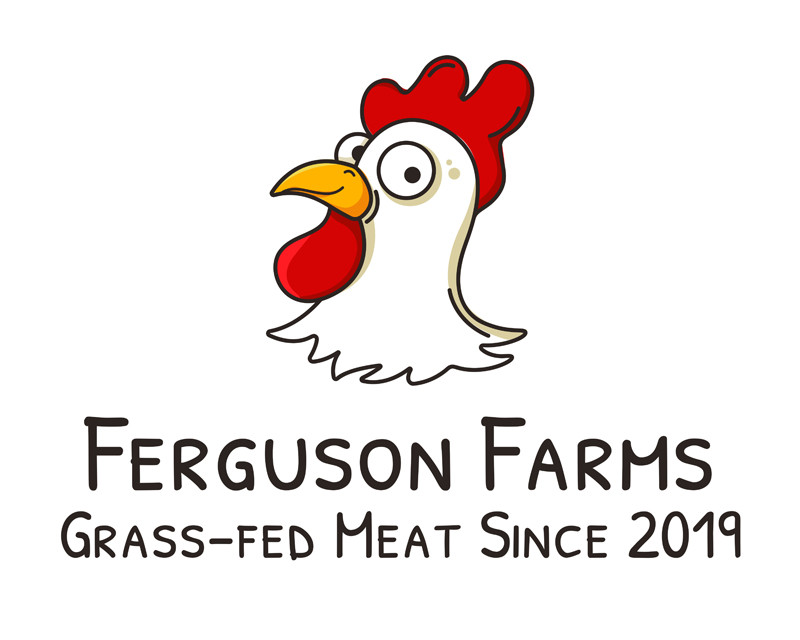What is Beef Shank? Cuts, Cooking Methods, and Recipes
posted on
August 14, 2025
What is Beef Shank? Cuts, Cooking Methods, and Recipes | Ferguson Farms
If you’ve ever wondered what is beef shank and how to turn this humble cut of beef into a restaurant-worthy dish, you’re in the right place. Beef shank comes from the leg of the animal—the ultimate “meat on the bone”—rich in connective tissue that melts into silky gelatin when cooked low and slow. With the right method—braising in a Dutch oven, slow cooker, or pressure cooker—you’ll get fork-tender meat, a deeply savory sauce, and classic comfort-food flavors that never miss.
At Ferguson Farms, our grass-fed beef shank is raised on pasture using regenerative agriculture practices—no added hormones or routine antibiotics. That means cleaner flavor, better nutrition, and beef that truly tastes like beef.
What Is Beef Shank?
Beef shank is a cut of beef from the foreleg or hind leg of the animal. Because these muscles do a lot of work supporting the cattle, the shank contains dense muscle fibers and plentiful connective tissue (collagen). Treated right—with moist heat and time—this collagen transforms into gelatin, yielding a glossy, body-rich sauce and meat that slips from the bone.
You’ll see shank sold as whole pieces or as cross-cut shank steak (sometimes labeled “shank cross cut beef” or “bone-in shank steak”). The circular cross-cut includes a marrow bone at the center—perfect for classic Italian osso buco / ossobuco where the bone marrow enriches the sauce. While veal shank is traditional for osso buco, beef shank delivers a deeper, more robust flavor.
Why Choose Grass-Fed Beef Shank
Grass-fed and pasture-raised beef offers a clean, mineral-rich flavor and a better fatty-acid profile (more omega-3s and CLA/linoleic acid) than conventional grain-finished beef. Our shank comes from animals managed with regenerative agriculture in mind—healthy pasture, healthy cattle, better beef. For you, that means a richer sauce, standout nutrition (iron, protein, vitamins), and confidence in how your food was raised.
Flavor Profile & Classic Pairings
Shank loves bold, aromatic ingredients that build layers of flavor. Think olive oil or avocado oil for searing; salt and black pepper for baseline seasoning; and a soffritto of onion, carrot, and celery sautéed until sweet. Add garlic, tomato paste, bay leaf, rosemary, and thyme. Deglaze with red wine (or white wine) and enrich with stock or broth. Finish with lemon zest, parsley, or a knob of butter for shine.
Best Ways to Cook Beef Shank
Because shank shines with moist heat, the winning approaches are braising, slow cooking, or pressure cooking. Each melts connective tissue and concentrates flavor in the liquid for luscious results.
Braising in the Oven (Dutch Oven)
The gold standard. Sear the meat in olive oil or other fat to develop fond, then add aromatics, tomato paste, and deglaze with wine. Pour in beef stock or broth, tuck in herbs, and cover. Transfer the Dutch oven to a moderate oven (325°F / 163°C) and cook until the meat yields to a spoon—usually 3 to 4 hours depending on thickness.
Slow Cooker (Crock-Pot)
Ideal for set-and-forget ease. Sear on the stove first, then move everything to the slow cooker with broth and aromatics. Cook on LOW for 8–10 hours. The gentle heat keeps the meat juicy and the sauce rich.
Instant Pot / Pressure Cooker
For speed without sacrifice, use an Instant Pot. Sauté to brown, then pressure cook for about 60–90 minutes with stock, aromatics, and a splash of red wine. Let pressure release naturally for ultra-tender results.
Smoking & Hybrid Methods
Want smoke? Give shank a low-and-slow session on the smoker or barbecue (225°F), then finish by braising to soften the last of the connective tissue. This hybrid approach layers smoke with a silky, gelatin-rich sauce.
Step-by-Step: Braised Grass-Fed Beef Shank
- Season: Pat dry. Season generously with salt and pepper.
- Sear: Heat 1–2 tablespoons olive oil in a heavy Dutch oven over medium-high. Sear shank until deeply browned on all sides; remove.
- Sauté: Add a bit more oil if needed. Sauté onion, carrot, and celery until softened. Stir in garlic and 1–2 tablespoons tomato paste; cook 60–90 seconds.
- Deglaze: Pour in 1 cup red wine (or white wine) and simmer 2–3 minutes, scraping up browned bits.
- Braise: Return shank to the pot with 2–3 cups beef broth or stock. Add bay leaf, rosemary, and thyme. Bring to a simmer.
- Oven: Cover and transfer to a 325°F oven. Braise 3–4 hours, until the meat is extremely tender.
- Finish: Skim excess fat. Reduce the sauce on the stove if needed. Adjust seasoning. Finish with butter, chopped parsley, and lemon zest.
- Serve: Spoon shank and sauce over polenta, mashed potatoes, or risotto.
Nutrition & Sourcing Notes
Shank is naturally lean in visible fat but high in protein and minerals like iron. Braising bone-in releases gelatin from collagen, giving you a sauce with luxurious mouthfeel. Choosing pasture-raised, grass-fed beef supports animal welfare and soil health while avoiding routine antibiotic use and added hormones.
Buying, Storing, and Kitchen Tips
- Look for deep red color and nicely cut cross-sections if buying cross-cut steaks.
- Keep in the refrigerator up to 2–3 days or freeze for longer. Thaw in the fridge.
- Braises taste even better the next day. Chill, then remove any hardened fat before reheating.
Beef Shank FAQs
Is beef shank good for quick grilling?
Not really—shank excels with moist heat. If cooking quickly, slice thin and marinate.
Which liquid is best?
Red wine brings depth; white wine keeps things bright; beef broth or stock adds body.
What’s the difference between shank and short ribs?
Short ribs are a bit fattier; shank is leaner. Both need slow cooking.
Can I substitute other cuts?
Yes—chuck or brisket can work with similar braising techniques.
Order Grass-Fed Beef Shank Online
Ready to taste the difference? Order our premium cut today and enjoy nationwide delivery:
👉 Shop Grass-Fed Beef Shank




